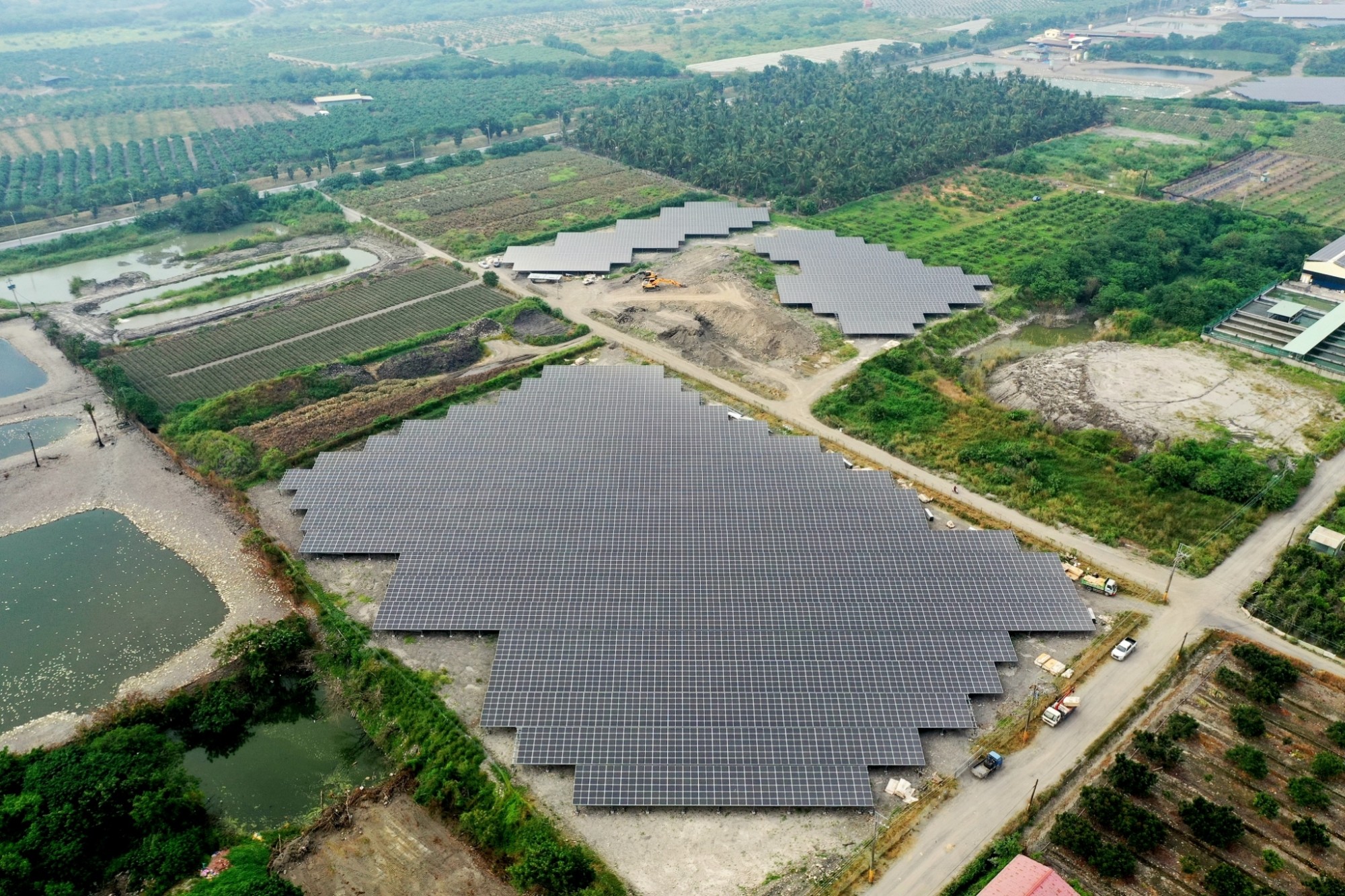Environmental Protection Bureau, Pingtung County Government 屏東縣政府環境保護局

Rebirth and Transformation of Badlands: Gaoshu Photovoltaic Green Demonstration Zone!
The demonstration site has also exemplified the United Nations Sustainable Development Goals (SDGs) from planning and design to completion, such as generating about NT$4.11 billion in output value and creating more than 200 jobs to attract young professionals back to the community (SDG-8: Decent Work and Economic Growth), remediating the site's illegal mining and gravel pits, removing trash, dirt, and waste, and backfilling the site with earthworks (SDG-11: Sustainable Cities and Communities), and revitalizing idle land by installing clean renewable solar power (SDG-7: Affordable and Clean Energy). Moreover, through site flood detention and drainage planning and design, the impact of climate change on the surrounding land can be mitigated (SDG-13: Climate Action). Through the promotion of the demonstration zone and Taipower's power infrastructure improvement project, a total of 200MW of extra-high voltage transmission lines was added in Gaoshu Township. The distribution lines required for civilian needs will be increased, so that the future use of electricity or grid integration can reduce the occurrence of cross-county electricity dispatch from Kaohsiung (SDG-9: Indusrty, Innovation and Infrastructure). By establishing this demonstration site, it is hoped Gaoshu Township will be transformed into a more resilient township. Finally, through the improvement and construction of the aforementioned power facilities, Gaoshu Township shall have a total of 200MW of grid-integration potential. After the completion of the “Gaoshu Photovoltaic Demonstration Project (41MW),” Taipower feeder lines still have about 159MW of grid integrated capacity. In order to encourage people in the neighboring areas to join in the green energy industry and provide new land-use options to landowners, the county government has started to inventory the land adjacent to the demonstration sites. In the future, it is expected to promote the transformation of 160 hectares of unsuitable agricultural land into a photovoltaic site, and to integrate the resources of landowners, operators, and the government to establish a “zero budget” implementation model with policy incentives, operator obligations, landowner rights, and public trust, and to revitalize existing land use practices with energy transition to address the problem of aging in rural communities.

